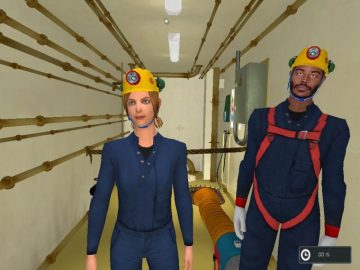Enclosed Space Entry: Time for Rethink

There is pressure building to rethink seafarer safety in enclosed spaces, after a new study has revealed the death rate has increased over 300 percent in recent times. A staggering statistic, which is prompting calls for action at the International Maritime Organization (IMO), and changes to the way in which seafarers are trained and made aware of the dangers.
It is the belief of many across the shipping industry, that regulations cannot be working, and at least of six people will die every year in a dry bulk carrier as a result of the cargo. So, the message needs to be hammered home and calls for existing recommendations for entering enclosed spaces on board ships are being made, with IMO Resolution A.1050(27) perhaps needing amendment to provide guidance on risk assessments, or even a new guidance developed
For so long the focus has been on the shipboard responses, as seafarers have all too often strayed into unsafe environments, and when they have collapsed others who rush to help succumb themselves. It seems clear there needs to be better training, but it cannot stop there, we also a need for a change in emphasis and means of engaging with seafarers. Training is imperative but training alone will not solve the problem; this requires a rethink on how seafarers perceive danger and of how they react to it.
Enclosed Space Debate
According to maritime industry experts, solutions to reduce deaths from enclosed space entry include:
- Practical, operational steps: Regular drills related to entry into enclosed spaces, but also a campaign to educate and spread awareness of the safety equipment available could assist in minimising casualties.
- Change in mindset: There is currently pressure to frequently inspect enclosed spaces, as required by planned maintenance or Classification Society requirements. The inspections criteria should be changed, and the maintenance period should allow for a proper shore side chemist to conduct certification for safe entry. While routine checking on the coating condition of a space could be deemed low priority.
- Change of Accountability: There are calls for a designated person on board should to be made responsible for ensuring enclosed space entry procedures, and for also ensure that best practice, underpinned by IMO regulation, is documented, available on board and strictly followed. Someone must take full responsibility and be held accountable for ensuring all safety parameters are checked before permitting entry.
- Port State Control: The port state control regime could also assist by inspecting a vessel’s readiness on how enclosed space entries are undertaken.
- Learning Lessons: Shipping has much to learn from other industries, such as mining. The mining industry, is understood to have a far higher safety level when dealing with entry into enclosed spaces, so there seems to be much that can be learned and applied onboard.
- Train and Educate: We train for the known, and so seafarers need to know the dangers and what they should do in specific situations. We also need to educate for the unknown, making sure that seafarers perceive and react to risks in ways which can protect them and their shipmates.
- Spread the Blame: InterManager believes that change is needed, and that incident investigations should not simply stop at blaming officers onboard. They should continue to look up the change and point the finger at the management company.
- Rethink Designs: Ship designers should start thinking of ships with enclose spaces in mind: first access then rescue, should something go wrong. Lack of ventilation is a major shortcoming in enclosed spaces at present, along with the size of manholes and passageways. knowledge of procedures, application of that knowledge.
- Technology: Every space should have gas metering equipment and every seafarer be equipped with a gas detection system. While access control techniques should be used to seal spaces until safe, and which would which would only allow one person responsible/designated person to open an enclose space, with an alarm system indicating unauthorized entry.
The loss of seafarers in enclosed spaces are tragedies, perhaps made even worse as they are recurring preventable accidents which are not being properly addressed. When a seafarer climbs the gangway at the start of a trip, we all need to work together to ensure they safely return home.
